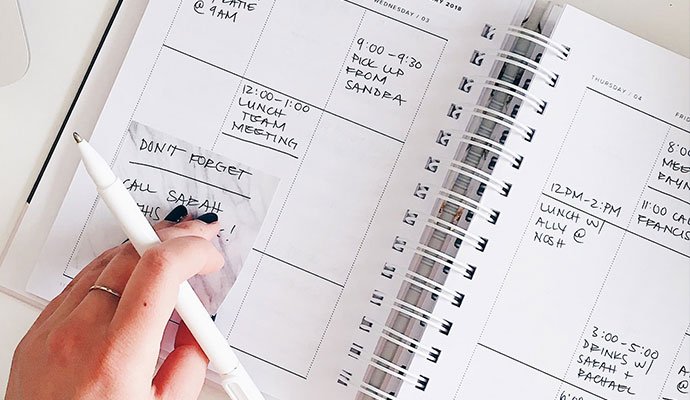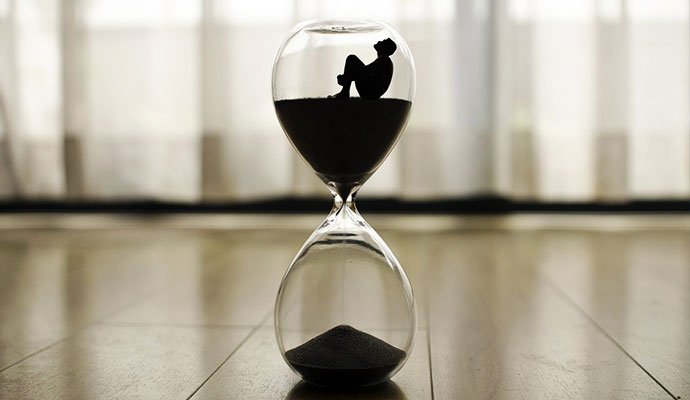24 hours a day! That’s what we all have!
However, different people have different productivity level. The saddest thing is that the most effective coworkers often are “rewarded” with more and more task because… well, they can do it. Life isn’t fair. But is there anything other people can do to take their share of the duty. There is always more to be done, more that should be done, always more than can be done. Let’s take a look at some tips for an easy-breezy working day.
One meeting a day
For most people, work meetings are simply a waste of time. Even the necessary ones break your flow and eat both of your time and productivity. Therefore, if you do run a meeting, keep it short and to the point. The ultra-successful people value their time because it is one of the few things money can’t buy. The meeting of the day is the most important thing for them so the whole attention is committed to the person on the other side. And this one meeting really matters. If you have a full schedule for weeks ahead it doesn’t mean you are a hard worker. It means you cannot properly manage your time at work.
There is an interesting story about a meeting between Bill Gates and Warren Buffett. When one of the most successful investors of all time has shown his calendar to Gates, there was nothing on it.
“You know, I had every minute packed and I thought that was the only way you could do things,” says Gates.
„But Buffett taught me the importance of giving yourself time to think. To dream really big. You control your time. It’s not a proxy of your seriousness that you fill every minute in your schedule.”
So take a deep breath and clean your calendar. Start to prioritize your daily tasks and think about which meetings are really important, which tasks are most urgent, which problems you can solve by yourself. Then think again and choose the most valuable meeting from all that are waiting.
What you can do today?
Prioritize your daily tasks
Keep meetings short and to the point
Schedule time in your calendar to think and dream big

Simply Simplify
Multitasking is never the right answer when you have a To-Do list because the human brain cannot fully focus. When people attempt to complete many tasks at one time, “or shift rapidly between them, errors go way up, and it takes far longer—often double the time or more—to get the job done than if they were done sequentially,” states David E. Meyer, Ph. D. from the University of Michigan. This is mainly because the brain is compelled to restart and refocus. With each switch, the brain makes no progress whatsoever. Therefore, multitasking people not only perform any task less well but lose time in the process.
So less is more. If you simplify your to-do list, your wardrobe, even your daily meals, you will have more time to focus on the important things. And accomplish one single task at a time. Set the timer for 20 minutes! Ever wondered why TED Talks are 18 minutes? This is how long you can concentrate on a task before losing focus. You will be more productive, successful and feel fulfilled.
What you can do today?
Stop multitasking
Stay focus on one task for 15 minutes
Set you free from unnecessary stuff
Eat The Frog And Beat The Clock
As Mark Twain once said “If it’s your job to eat a frog, it’s best to do it first thing in the morning. And if it’s your job to eat two frogs, it’s best to eat the biggest one first.”
The first thing you should do at work is to get your to-do list and finish the most unpleasant task of the day. Always. Once you get started, you’ll quickly find your flow and get that task out of the way. Whether it is the phone call with a grumpy customer or the meeting with the boss, the boring accounting report or the unpleasant talk with a colleague. This is the task you should check out first. Either the problem will be solved or you’ll see that the situation is not as horrible as you thought. And when that one task is done, the rest of the day will be an easier ride and you will get both momentum and a sense of accomplishment at the beginning of your day.
For many people, the art of delay is the reason for a high level of stress and low productivity. And instead of finishing with the job right away they check the inbox again and again, or make unnecessary phone calls or even watch something on the net, delaying the task that should be done. But the brain remembers uncompleted or interrupted tasks better than completed tasks. And a lot of resources and energy is lost by procrastinating. So stop wasting your time, focus on a particular task and eat the frog.
What you can do today?
Do the dirty job first
Complete that task and forget it
Stop delaying

Kaizen, One-minute Principle
In Japanese culture, there exists the practice of Kaizen, which includes the idea of the ’one-minute principle’ for self-improvement. The word means Kai (change) and Zen (wisdom). At the heart of this method is the idea that a person should practice doing something for a single minute, every day at the same time. Clearly, it shouldn’t be any trouble for absolutely anyone to carry out a given task for such a small amount of time. We used to find excuses not to do something and carrying it out for half an hour or an hour a day, but it’s much easier to do for just 60 seconds. Kaizen is a philosophy that can lead to success in personal life and in business also. When our time is limited to 1 minute the tasks don’t seem so hard, on the contrary – they bring joy and satisfaction. And with small steps, we improve ourselves and achieve greater results.
If one minute seems not enough, you may follow the 2–Minute Rule from David Allen’s bestselling book, Getting Things Done. If you see a task or action that you know can be done in two minutes or less, do it immediately. It works for big goals as well as small goals because of the passivity of life. Once you start doing something, it’s easier to continue doing it. This rule isn’t about the results you achieve, but rather about the process of actually doing the work. The focus is on taking action and letting things flow from there.
What you can do today?
Start first, then continue
Practice, practice, practice
Schedule that one minute
Get a Rest to Do Your Best
Susan Butcher is an American sled-dog racer and trainer who dominated her sport for more than a decade, winning the challenging 1,100-mile Iditarod Trail Sled Dog Race in Alaska 4 times. In 1986 Butcher came in first with a record-breaking time of 11 days 15 hours 6 minutes.
Until then the competitors were racing twelve-hour without rest, and slept all night. Or the opposite – racing through the night and resting all day. But Susan changed the strategy. She knew the dogs’ physiology so well and trained them like real athletics: four to six hours of racing and the rest with the same duration.
Many great athletes use this method of training – intense workout followed by the same time-off.
This is the optimum model for the human body to achieve the top of physical potential. Our brain works the same. It needs breaks.
K. Anders Ericsson, Professor of Psychology at Florida State University writes in his book “Peak: Secrets from the New Science of Expertise” that dramatic improvements are achievable if we apply the principles of deliberate practice. And one of these principles is to take time to recover. Because the full attention, with maximum mental and/or physical effort, can only be sustained for a short period of time. Laboratory studies of extended practice have discovered the GOLDEN RATIO
1 hour per day, 3-5 days a week
and real-life studies have seen reduced benefits when practice sessions exceed two hours. This level of intensity and concentration makes recovery time important.
What you can do today?
Rotate working and resting cycles
Take that lunch break
Split smart workout and recovery time

Do Nothing to Do Something
People often mistake laziness with doing nothing at all. But that’s not true. Actually, lazy people listen to music, read magazines, watch TV, browse the net, shop online… they do so many things to get distracted from the thing they should do. So laziness is in fact useless action. How to get rid of it? Generally, stop doing anything at all. Just sit or stand in the room (don’t lie down to prevent from falling asleep) in the next few minutes you will feel that you can get to work, everything gets clear in your head – what needs to be done right now. And you will start to do it. If you feel lazy again, stop doing anything. Soon you will return to a healthy state of mind.
This method can be applied to any business. Don’t try to convince yourself that you need to work. Forget about controlling your thoughts. On the contrary, let them flow freely in any direction. This will last about 7 minutes and it goes away, often giving you very useful insight.
What you can do today?
Avoid doing useless actions
Stop the distractions
Allow yourself a few empty minutes before every task
Here are some very popular tips for better productivity. We all know them but how many of them we actually do? Let’s check:
- Take care of your body – sleep and exercise regularly, drink water and eat healthy food
- Stay focused on the task without distraction at least for 15 minutes
- Delegate tasks and stop being such a control freak, other people will manage to do it too
- Know your limits and say NO to the tasks you don’t want to and no need to do
- Stay calm. Our brain gets exhausting not from mental work but from emotions too
- Don’t meet or talk to people that waste your time
- Use productivity tools to reduce the amount of time you spend in front of a computer
- List your results of the day and reward yourself
- Select your top priorities. You cannot be perfect in more than 3 areas of life – choose wisely and be happy

Even though if you still can’t stay motivated to do your tasks on time and properly, don’t blame yourself. Maybe the area you work in is not you purpose. Maybe you are in the wrong place and you are just wasting time and energy. If your job doesn’t bring you joy and your heart is heavy every morning on the way to the office try to understand what is the one that inspires you. Remember we spend one-third of our time working, so go for it! Leonardo da Vinci, Mark Twain and Maria Curry definitely wouldn’t be the most successful sales managers in engine oils for Central Europe, right? 😉